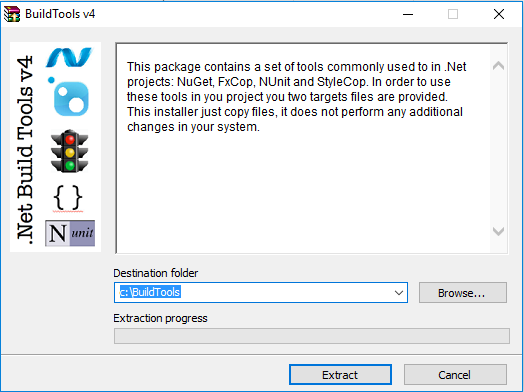Last week I started a new C# project with an existing team that was in charge of the maintenance of an existing application. One of the first things we did was defining the project structure in terms of development tools/frameworks. This is not a trivial discussion in C# because the are always 2 ways of doing things: the Microsoft way and the Community way.
Microsoft way is very straight forward for working with Visual Studio and writing quick (and usually dirty) code. But if you want to build testeable, robust and maintainable solutions, it could be better to stay with the community way.
The community way usually includes open source and community supported tools/frameworks like NUnit and OpenCover. One drawback of the community way is that you have to take care of integration the different tools/frameworks, a concern that is usually already solve when you go with the Microsoft way. As a consequence of this situation I implemented some time ago my BuildTools package.
Last week, when we started the new project I was thinking to use that BuildTools package, but I realized that Visual Studio 2017 has been released recently, so I decided to re-think the strategy in case something has changed.
I after some research I was able to create a MsBuild script to run tests with NUNit and measure coverage with OpenCover. But I was not able to find a nice solution for NuGet, it seems NuGet is now firs-class citizen inside Visual Studio, but the nuget.exe is not part of the Visual Studio, so we still have to install on by hand.
Here is the sample project I am using to document my approach, any feedback is welcomed.
In future articles I will write about the strategy to integrate React and its build stack into the C# solution.

